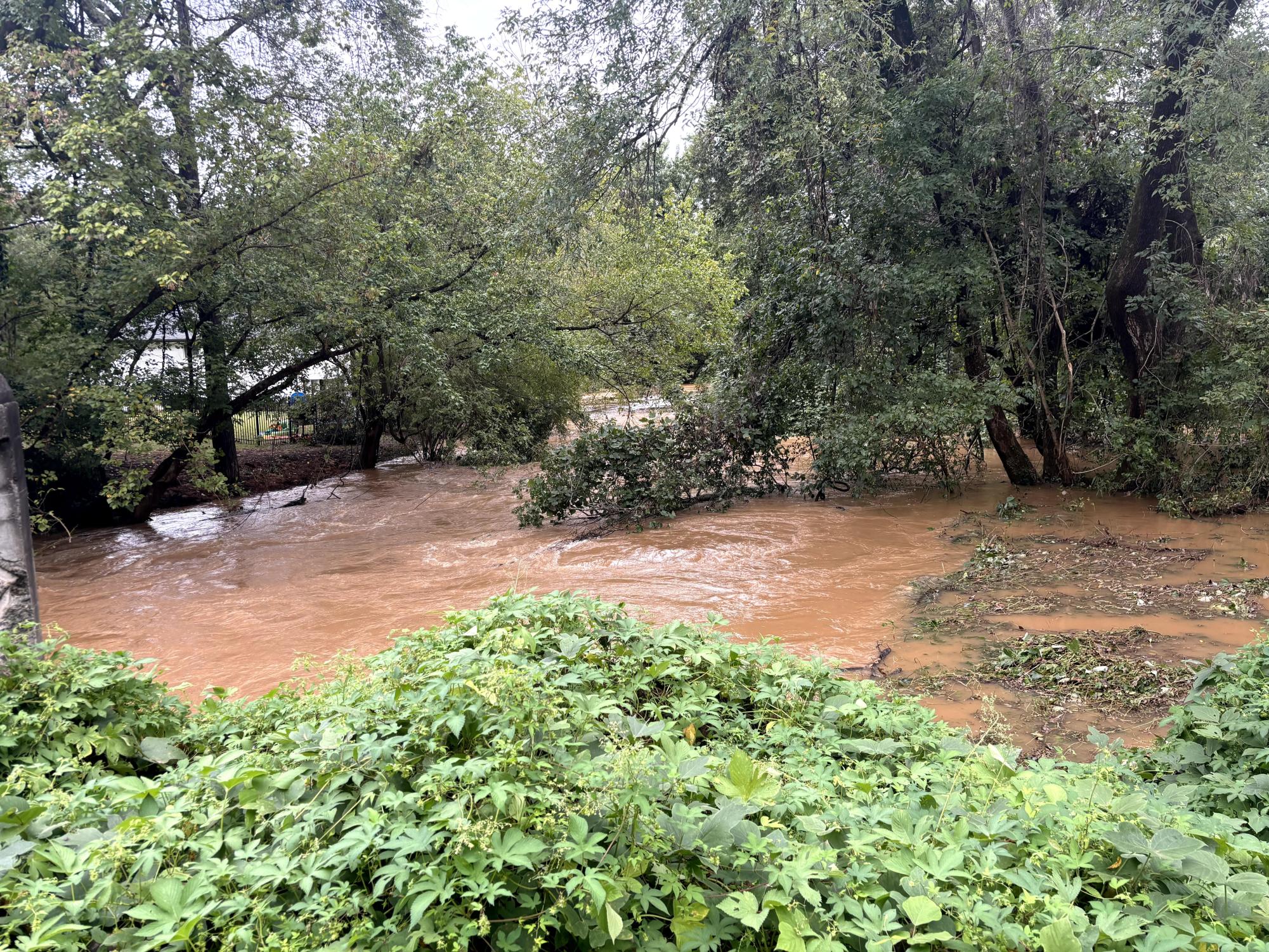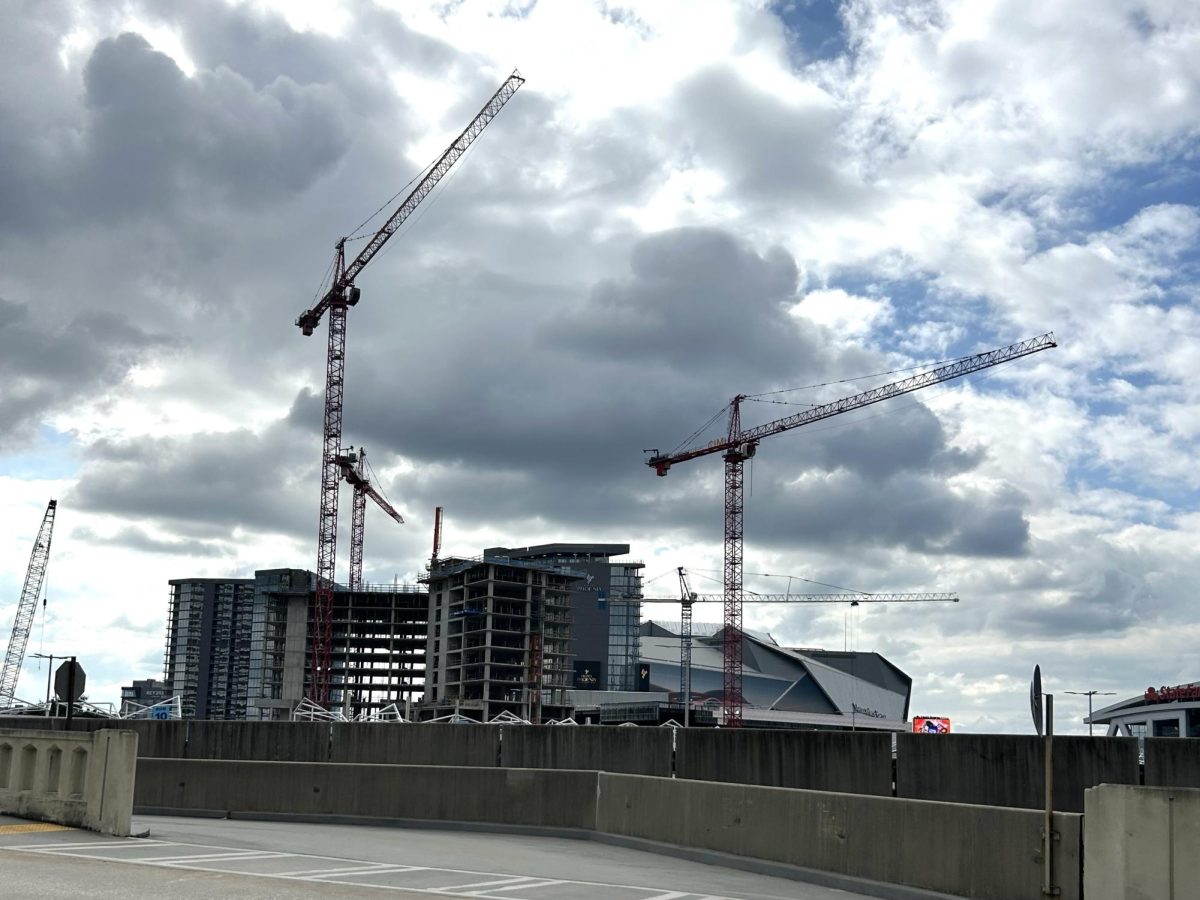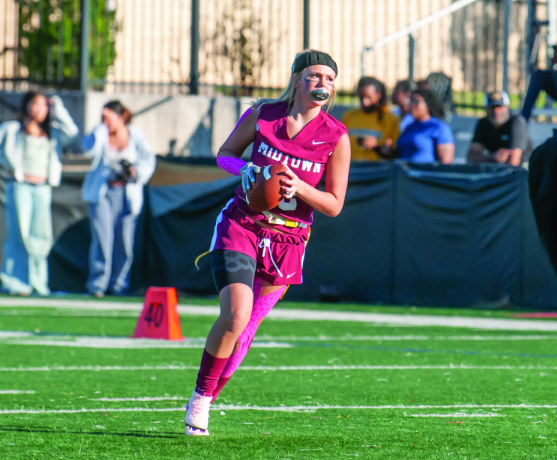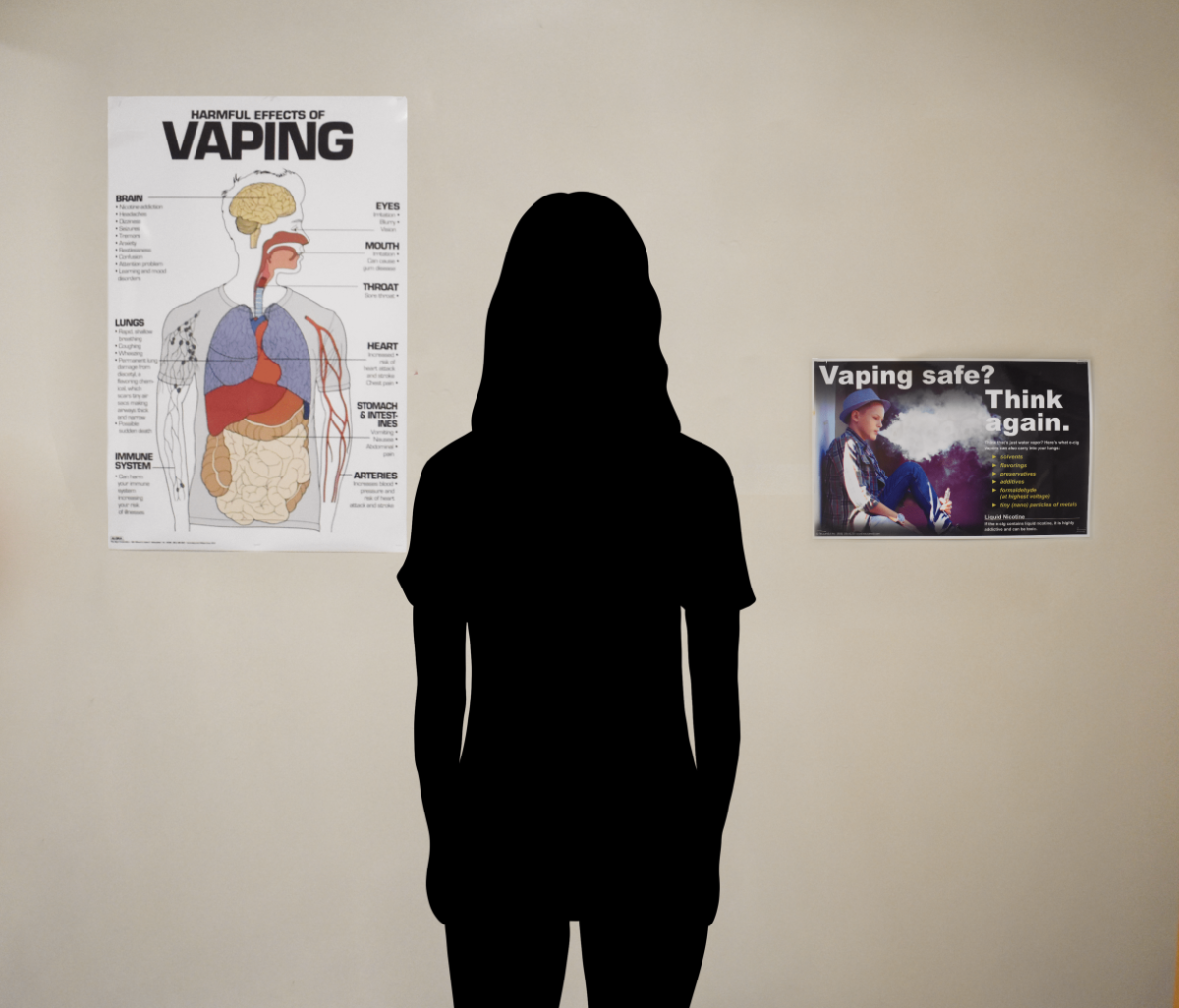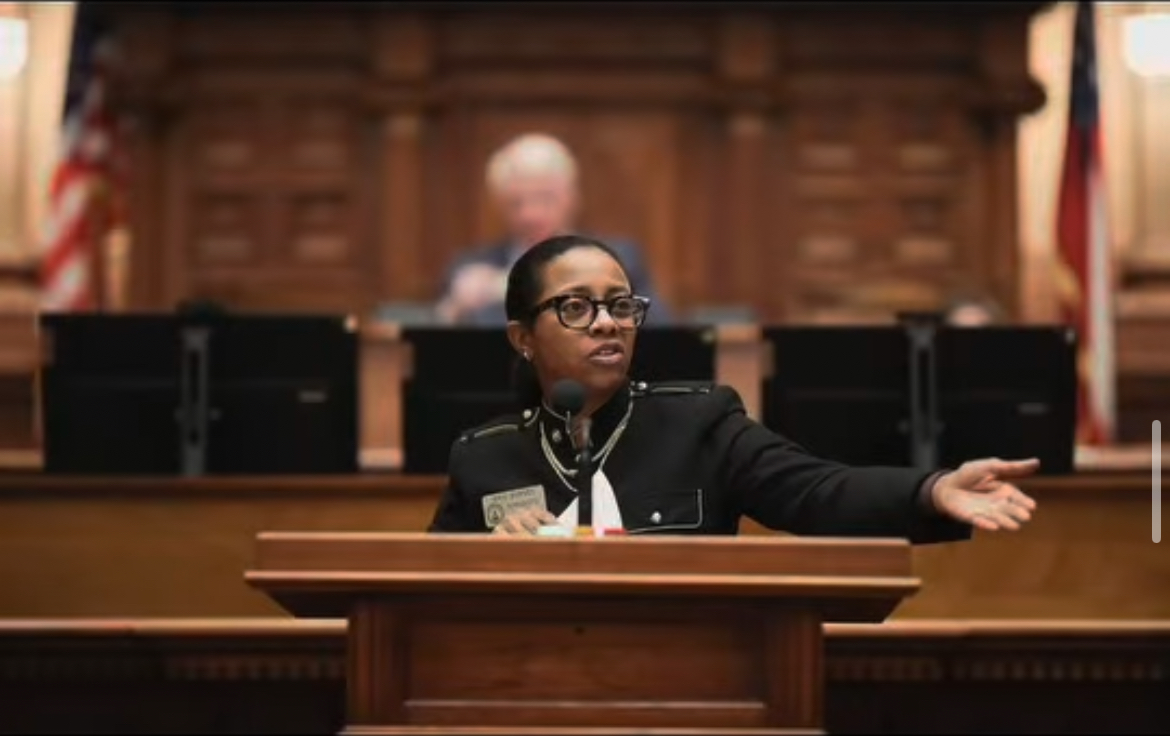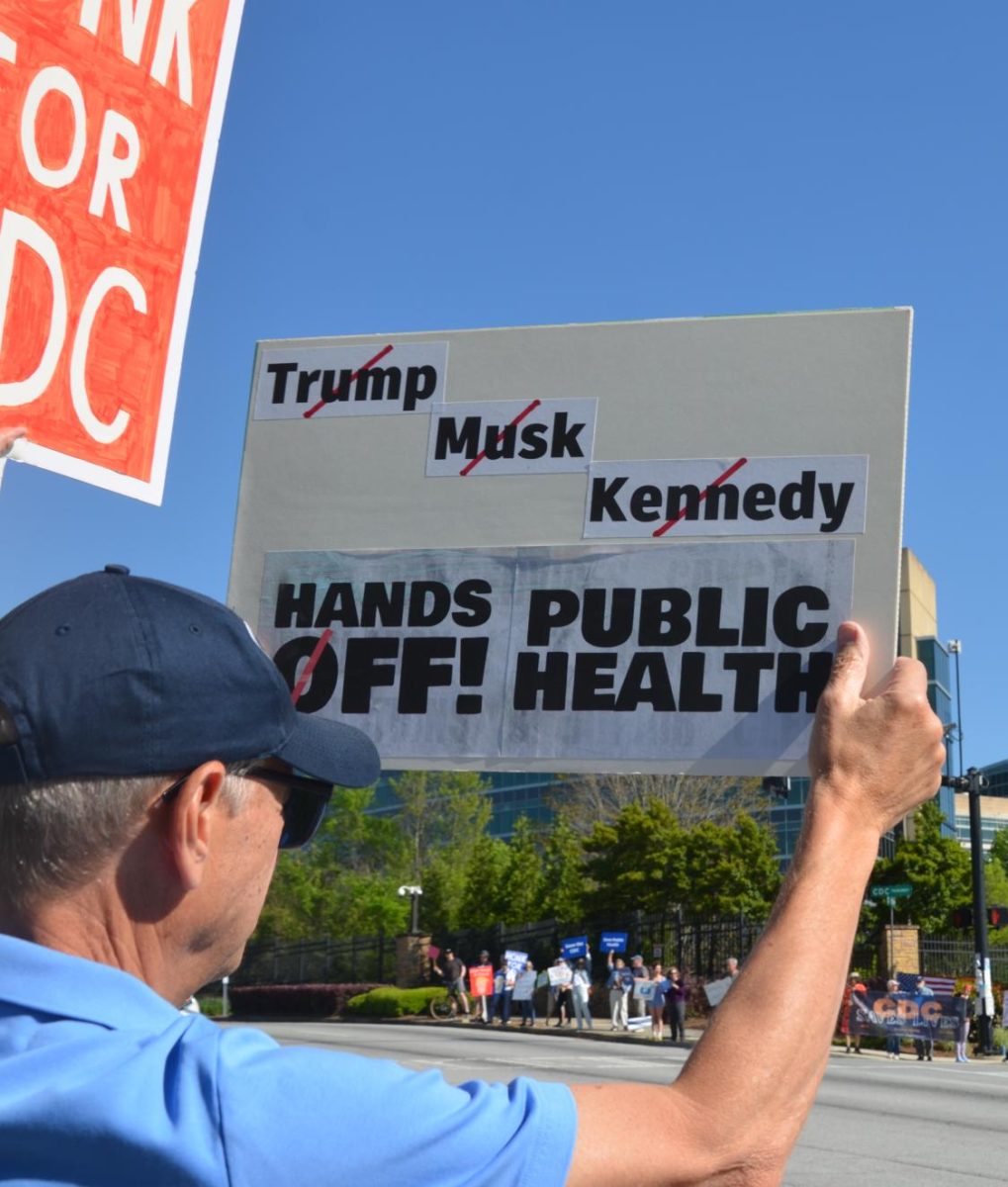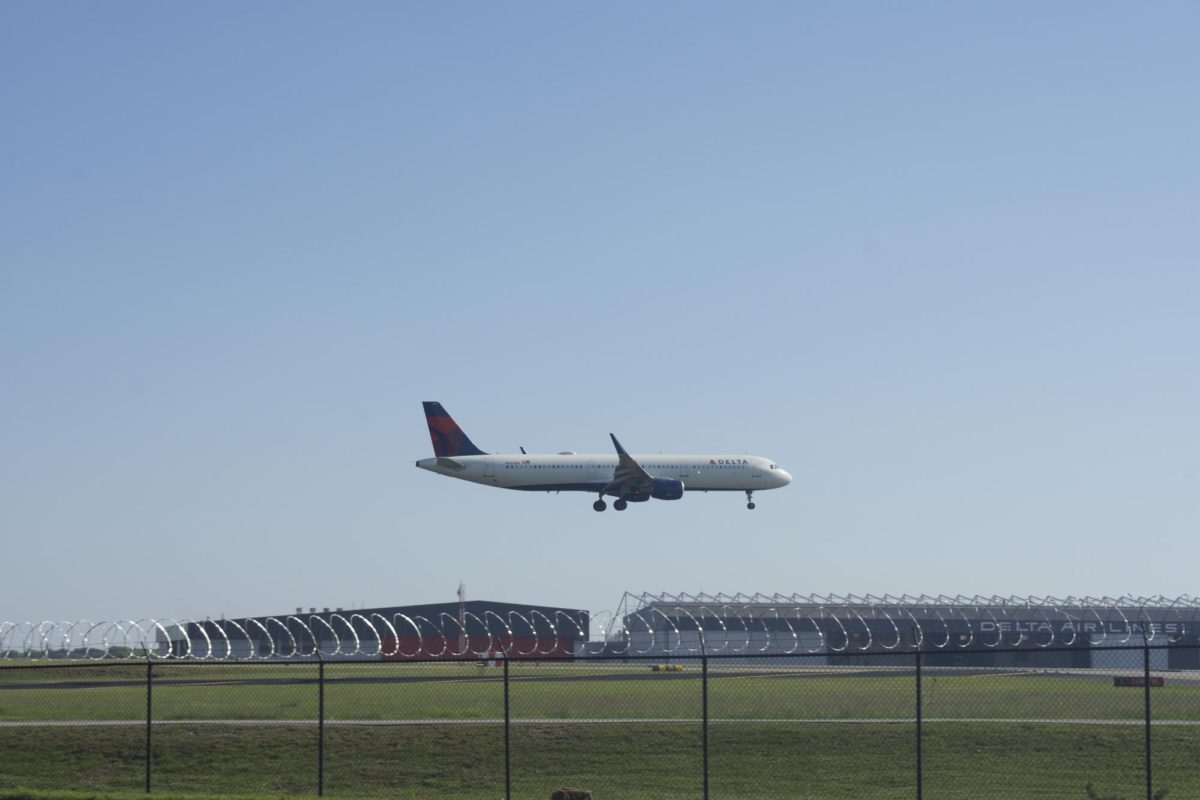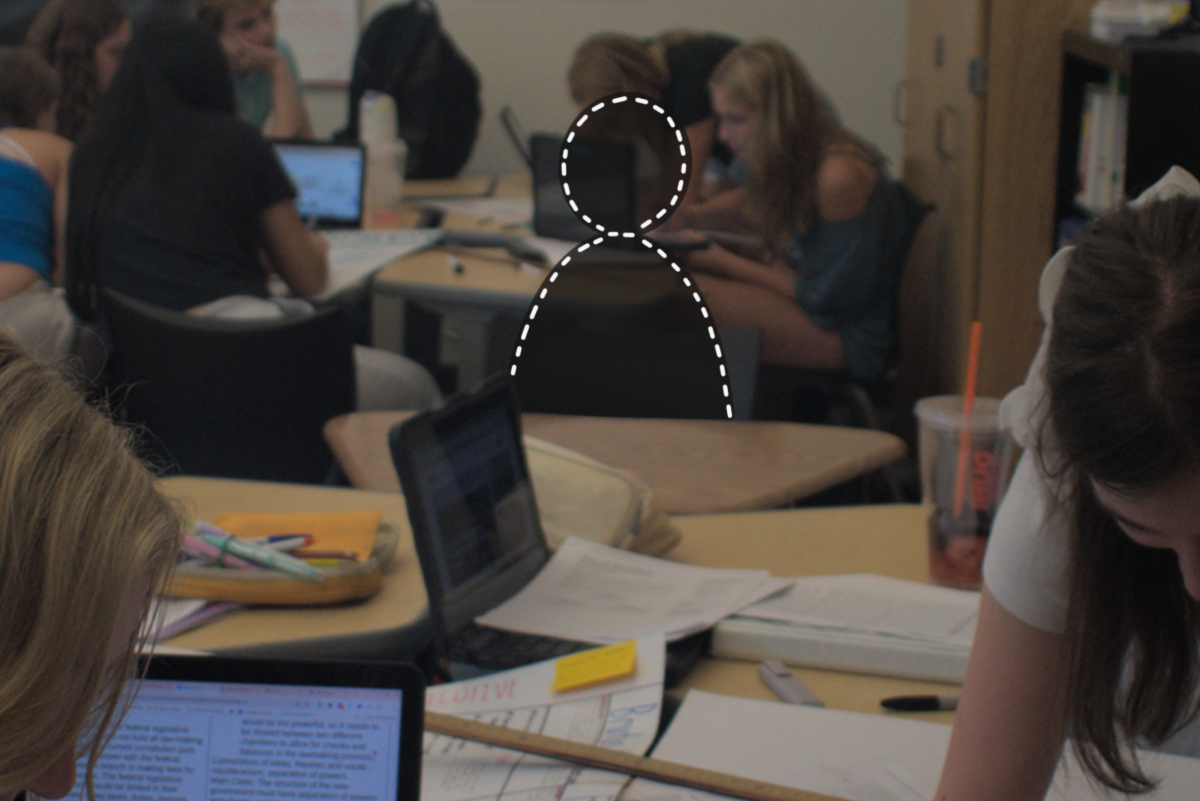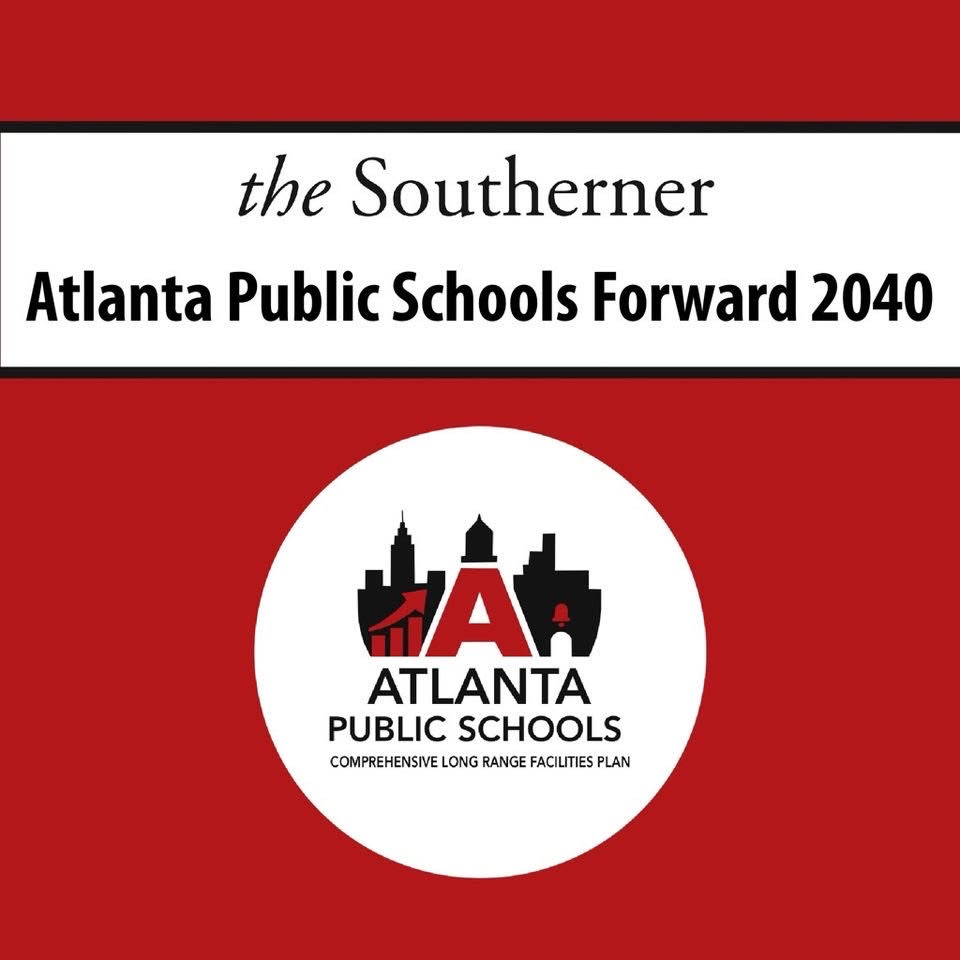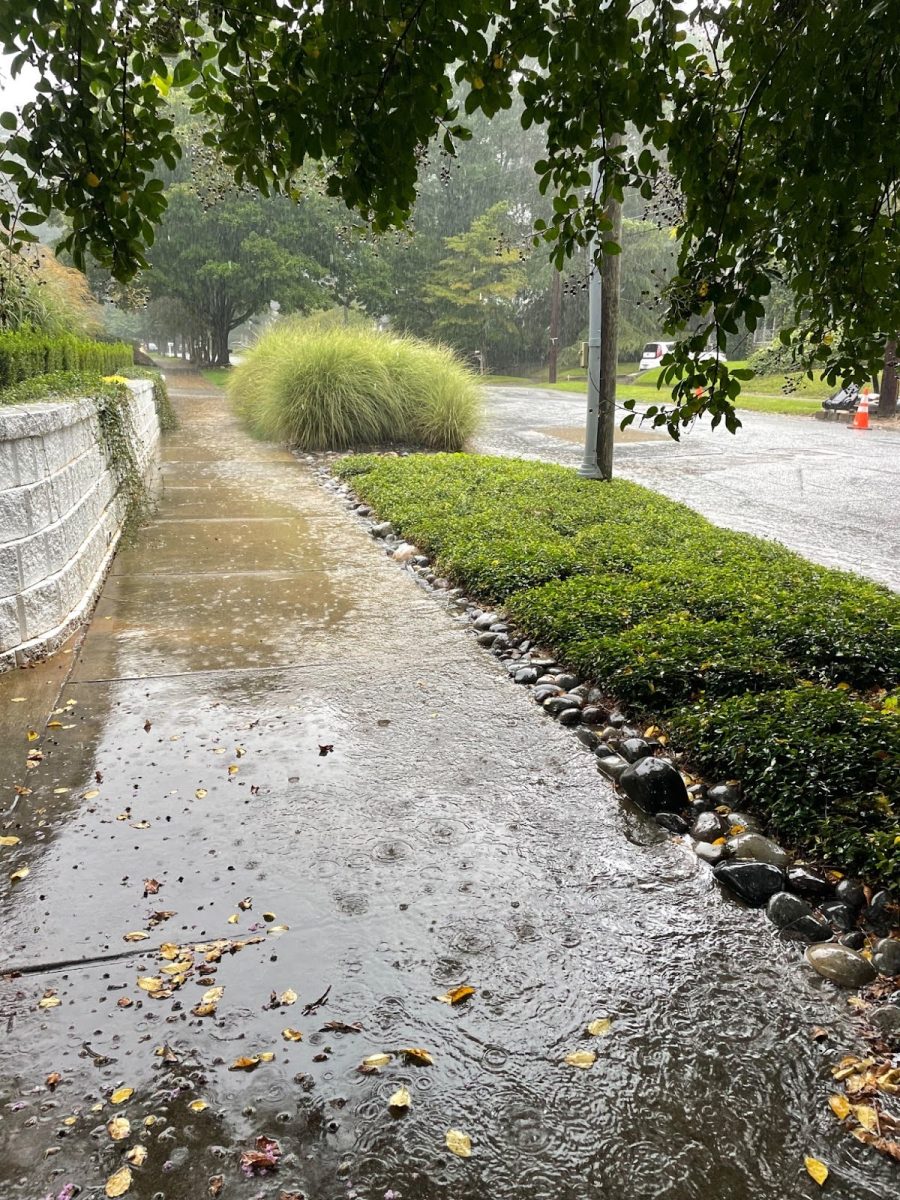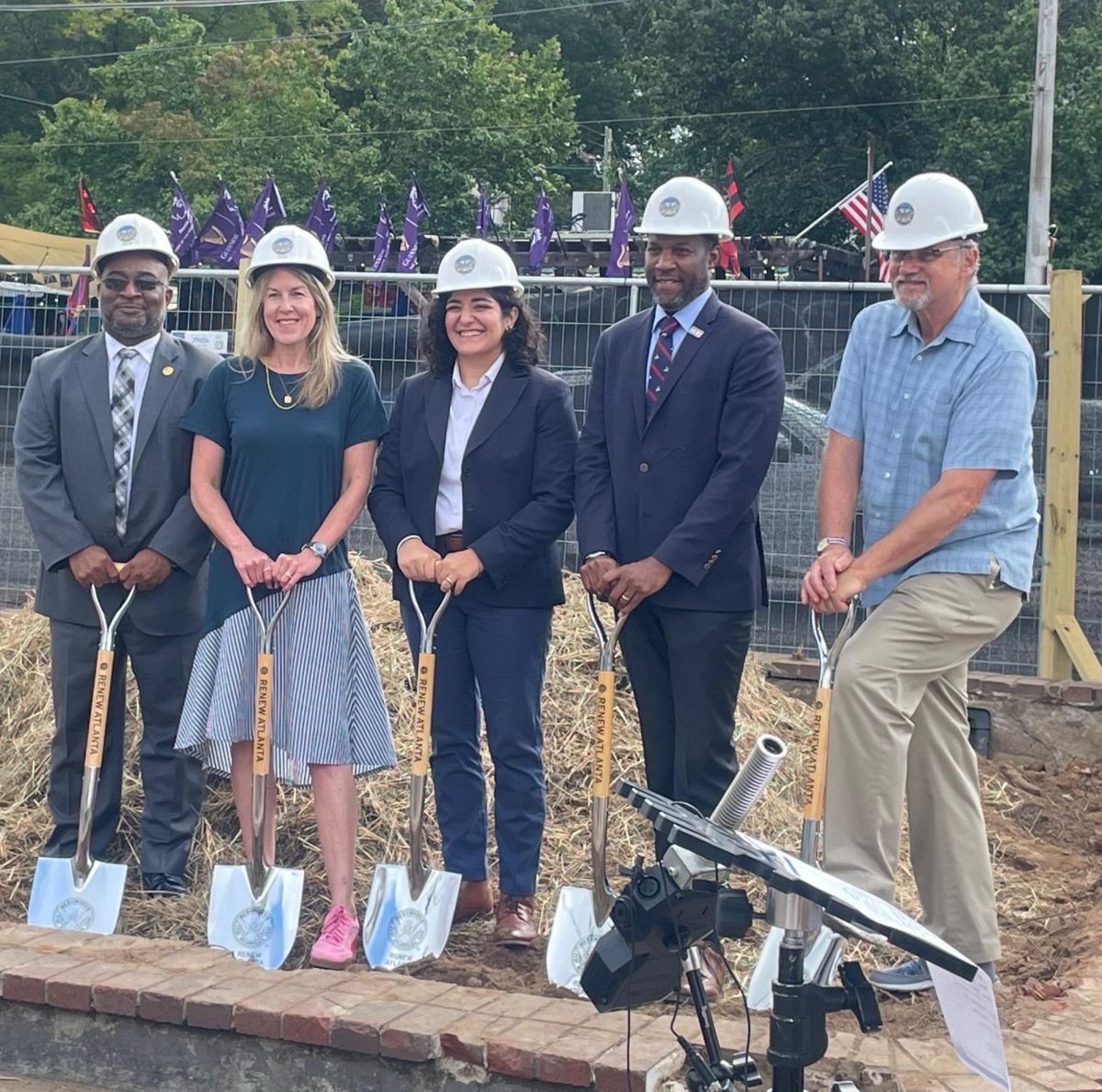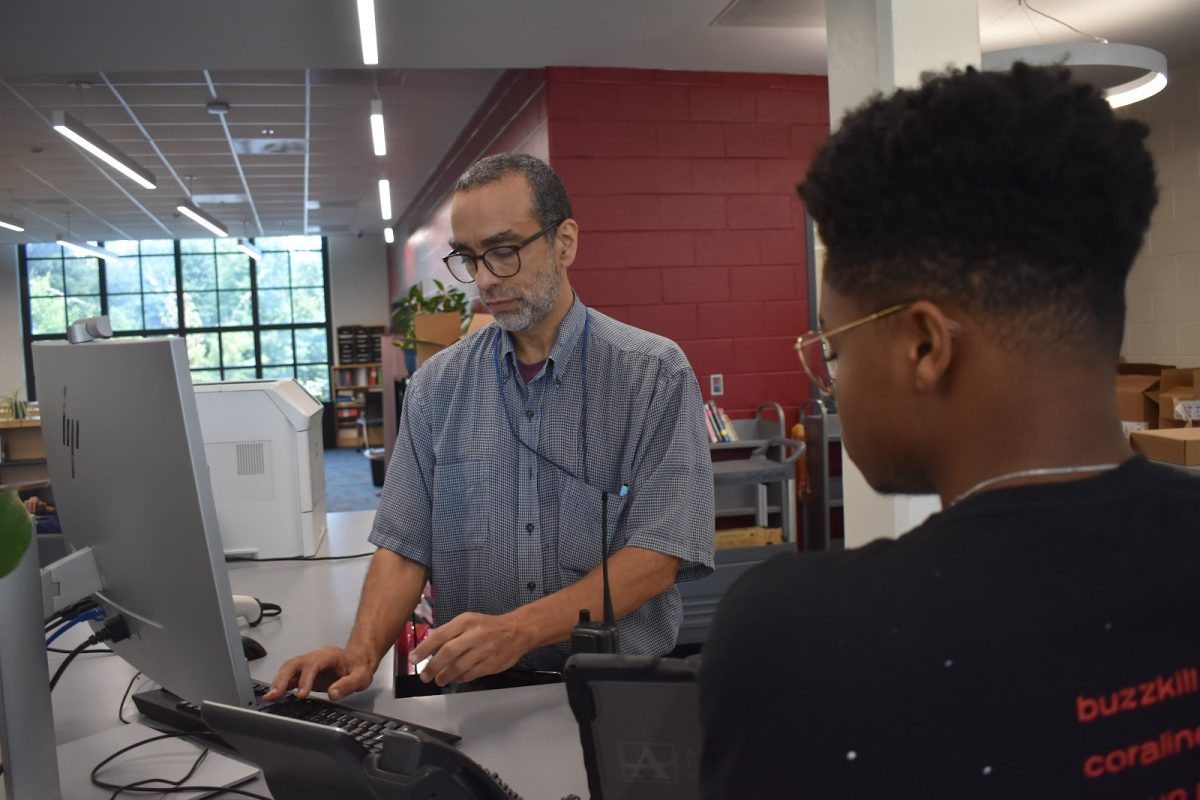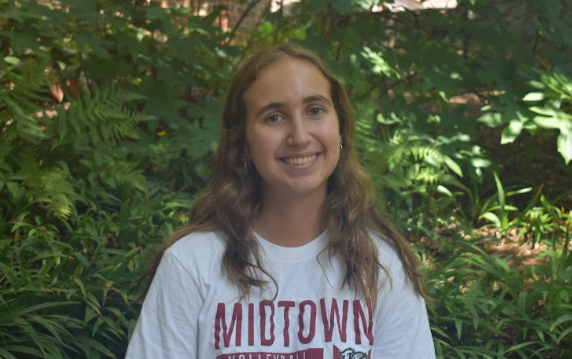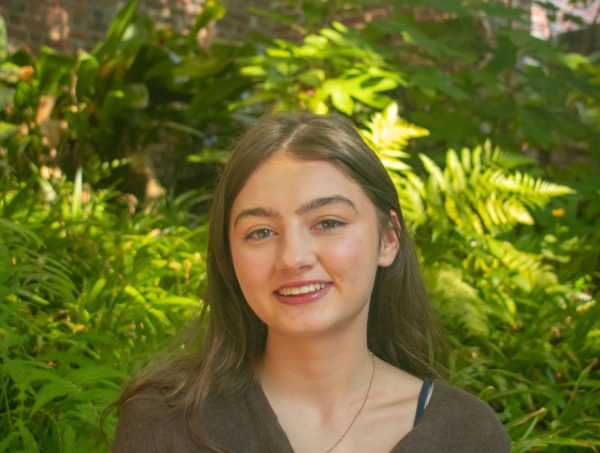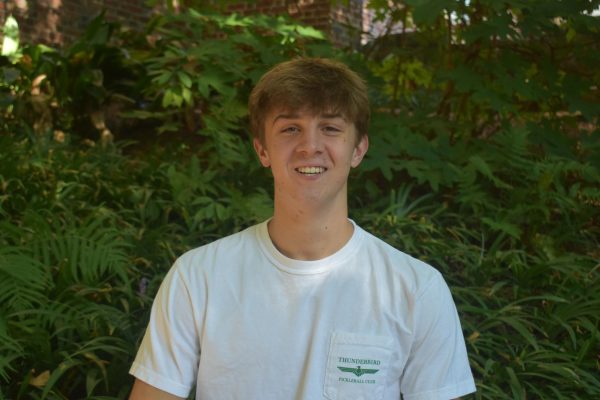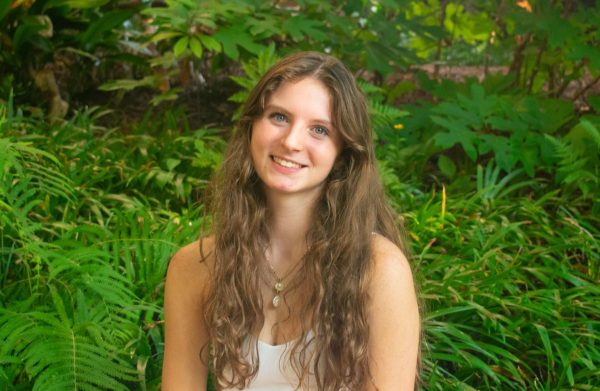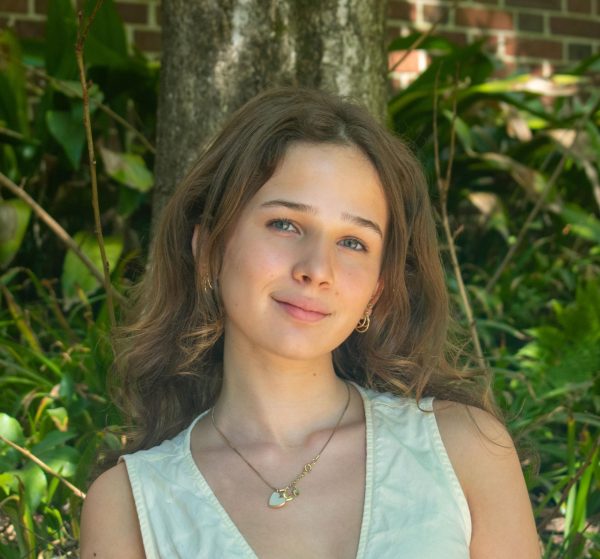Hurricane Helene made landfall on Florida’s Gulf Coast as a Category 4 storm on Sept. 26. Less than two weeks later, on Oct. 9, Hurricane Milton hit Siesta Key as a Category 3 hurricane.
These two hurricanes caused mass damage across the Southeast, resulting in widespread economic and infrastructural issues. While the hurricanes were the most destructive in Florida, they caused many issues across Georgia, as well.
“For me, although I think this is a shared experience for everyone, I did not expect the storm to wreak nearly as much havoc as it did,” Douglasville resident Drew Tanner said. “We were expecting power to be out for a couple hours, not weeks.”
Hurricane Helene caused Atlanta to have a record-high 48-hour rainfall of 11.12 inches, which caused flooding all across the city, Atlanta News First, Channel 46 reported.
“Helene’s major effect in Atlanta was the flooding as a result of the rain that comes from the outer bands of that hurricane passing through,” science teacher Beth Kostka said. “In terms of the coast, it’s both that rain and flooding potential, but then also the increase in water being pushed ashore and surging into areas that are built up.”
The official hurricane season begins June 1 and concludes Nov. 30, and while the season has a slightly less than month left, the number and intensity of hurricanes has already surpassed the average.
“On average, we have 14 named storms during a hurricane season,” Atlanta News First’s chief meteorologist Jessica Valdez said. “Of those 14 named storms, we normally have seven hurricanes and three major hurricanes. So far this year, we have had 15 named storms, 10 hurricanes, and four major hurricanes.”
Direct Impact
As a result of heavy rainfall and flooding, tree roots systems became compromised, which caused many trees to fall, which worsened traffic around Atlanta. Junior Sloane Crisler felt these impacts after the hurricane. Her commute was disrupted by fallen limbs.
“Even though we were pretty out of the way of the hurricanes, the impact was definitely still noticeable,” Crisler said. “On my street, the water level in [a nearby creek] was super high; there was a mail truck crashed and a huge tree was blocking half of the road. It made it really hard for me to get anywhere and was scary to see.”
Hurricanes Helene and Milton both initially hit within the Big Bend Florida then traveled further into the Southeast.
“Three of the last five hurricanes happened to make landfall in the big bend of Florida and Helene was the third hurricane to make landfall in the big bend over the last 13 months,” Valdez said. “Hurricane Helene was also the strongest hurricane to make landfall in the Big Bend.”
Many Floridians evacuated due to the treacherous conditions predicted from the storm. Georgia State Parks and the Atlanta Motor Speedway both harbored these refugees. Additionally, many state residents took in friends and family from Florida. Economics teacher John Cowan was hosting his friends from college, who live in Tampa.
“As the storm approached Tampa and looked especially threatening, [my friends] reached out and asked if they could come stay with us a few days to escape it,” Cowan said. “We were geographically their closest family or friends who were out of the path of the storm, so it was really just a matter of convenience.”
Westminster School’s campus and football field were flooded by the storm.
“The flooding took the power out at [Westminster], so they canceled all afterschool activities and sports,” Westminster junior Gabrielle Cropper said. “They then canceled school on Friday completely and shut down campus. They kept the campus closed all weekend.”
Even with the flooding around the school, Westminster quickly and efficiently made the campus ready for school the Monday after the storm on Sept. 30.
“Westminster’s ground crew immediately began to drain out the water and clean up the damage that occurred,” Cropper said. “The campus was able to reopen completely on Monday for school and all activities. I’m not exactly sure about the plans for the future, but I’m sure they will do everything they can to keep all of the students, teachers and faculty safe.”
Hurricane Helene also impacted Lovett School, whose football stadium borders the Chattahoochee River, knocking out all power and flooding many recreational fields.
“Our school was closed on that Friday because of major flooding, and our entire football field was underwater,” Lovett junior Ben Posner said. “The storm canceled all classes on that Friday because there was no power, and it also canceled our football game.”
Posner also went viral and was featured on WSB-TV Channel 2 Action News for his efforts to help his friend during the flood in order to go to the University of Georgia football game against Alabama. Posner used a raft to rescue his friend, Lovett senior Peter Pearce, whose neighborhood was submerged in water.
“My friend texted me that morning telling me he couldn’t go to the game because of the flooding, but that he could go if I rescued him with a raft,” Posner said. “So, I drove up to a Dicks Sporting Goods and got a raft and then rafted across his street. It was around seven or eight feet of, basically, sewage water with rats and snakes in it; you’d get really sick if you swam in the water. When I got there, Channel 2 Action News started filming and questioning what I was doing.”
Douglasville was severely hit by the storm, which resulted in many trees falling. Tanner said that caused his community to come together in response and clear the roads.
“I expected the county government to have trucks and machines to move all the trees off the streets so you could get out,” Tanner said. “That never happened. It was really all the neighbors getting together and clearing pathways so that people could get through and so that the elderly could get medical assistance. What was amazing was how the community came together to help others.”
As a result of the hurricane, several areas across Georgia experienced power outages, some of which lasted for weeks.
“Not having power is just terrible,” Tanner said. “It’s miserable not having air conditioning when it’s 90 degrees and humid. You don’t have hot water; you don’t have a refrigerator; you don’t have phones. And you don’t have any lights; so, when it gets late, it’s just dark and eerie and quiet.”
Along with the impact on communities, outages also temporarily shut down businesses.
“Everyone was out of work for at least a week,” Tanner said. “If you wanted to open your business, you didn’t have power, and you didn’t have service, so there was nothing really you could do. On top of that, you don’t have the internet to let employees know to come to work, and they couldn’t even make it because of the fallen trees. With businesses that are barely making it and then having two weeks of no income, a lot of them could be put under.”
A former Florida resident, Kostka knew how to properly prepare in case a hurricane hit.
“I used to live in Florida,” Kostka said. “Every hurricane season, which lasts from about June through November, I used to have a go bag with clothing and things I wanted to take and throw into the car. But more importantly, I’d also have my Go Box, and I would keep materials that if our electricity went out, I needed to survive. I had toilet paper and canned foods and a can opener and other things like that, so that if a hurricane hit, and you were caught without electricity for two weeks, you were prepared.”
Cowan grew up in Southern Mississippi, another hurricane hotspot. He remembers the impact of Hurricane Katrina on his childhood.
“I grew up near the Mississippi Gulf Coast and know the devastation that hurricanes can bring to a community,” Cowan said. “Hurricane Katrina dramatically impacted my life at the time and the area I grew up in, and many of the scars of that storm are still present nearly 20 years later. However, and not to downplay the damage it did cause, it did seem like Milton did not have as dramatic an impact as some estimates predicted, which is a good thing all around.”
Climate Change
Hurricane Helene hit parts of inland North Carolina and caused flooding and damage in parts of Georgia, both areas not used to these sorts of conditions. Dr. Annalisa Bracco, a professor of Ocean and Climate Dynamics at Georgia Tech’s School of Earth and Atmospheric Sciences, said climate change is causing extreme weather conditions in places unfamiliar with these disasters.
“In general, [the increase in natural disasters] is telling us that the climate is indeed changing and that climate models have been overall correct in predicting conditions that will exacerbate extreme events, and we are seeing the impacts of that,” Dr. Bracco said. “Temperatures are getting higher and extremes are getting more common: more droughts, more heavy rains, more forest fires, more heat waves, increased storminess, also more strong cold spells in places not used to getting them as strong.”
Climate change is causing a temperature increase in ocean water, making it easier for hurricanes to become more intense.
“The reason is that the ocean has gotten warmer and sea surface temperatures are increasing, especially,” Dr. Bracco said. “Storms intensify by being energized by the heat in the water, especially because the ocean can easily store heat, more so than the atmosphere, being a liquid — so, warmer oceans, more energy for storms to grow.”
Kostka said the increase in temperature is caused by fossil fuels and greenhouse gasses.
“We’re already seeing, and data supports it, that we’re getting more and more hurricanes each year,” Kostka said. “That’s a result of the warming temperatures caused by climate change, and so, the more we continue to burn fossil fuels and add more greenhouse gasses to the atmosphere, we’re going to have more and more problems with these types of situations and hurricanes.”
Dr. Bracco believes if further measures are not taken, natural disasters such as Hurricane Helene and Hurricane Milton will become more frequent.
“They will get more and more common,” Dr. Bracco said. “In general, everything will become more intense and concentrated. So, more storms and intense rain episodes, more chances of prolonged drought, more chances of hurricanes, etc. I would say look at the statistics of the south of Europe. The Mediterranean Sea has warmed a lot, being a small, enclosed sea and the impacts there are possibly greater than here right now, in other words, things there are changing a little bit faster. We can kind of look there and see that what we are observing here in the U.S. is moving in the same direction, and we are likely to continue with the trend.”
Future Implications
The existing influence and the increasing frequency of hurricanes has left uncertainty and concerns for the implications of hurricane seasons in the future.
With new technologies being developed, Dr. Bracco believes these tools will be necessary in lessening the effects of climate change.
“A lot of research is on developing new energy sources, for example, based on hydrogen,” Dr. Bracco said. “I would argue that given current knowledge and how fast the cost of climate change is growing, more nuclear energy is also needed because we have the technology already.”
Dr. Bracco also said investing in renewable energy and infrastructure will help reduce the effects of climate change on natural disasters and help with preparedness.
“First and foremost, reduce emissions of greenhouse gasses,” Dr. Bracco said. “This means shifting towards renewable energy sources. Then deploying technologies that can help reduce the content of carbon dioxide in the atmosphere (so called carbon dioxide removal or CDR technologies). Then think hard and invest in infrastructure, including buildings, that can withstand extreme events better while also being more sustainable — requiring less energy to be heated and cooled down for example — and consider where to build, coastal areas are at greater risk than some more elevated areas or in — and regions.”
The indisputable rise of hurricane frequency has left many east coast residents, including Cropper, worried about the future of damage that natural disasters incur.
“I would say that yes I am worried about hurricanes in the future just in terms of the safety of others because of the amount of damage and scary conditions that everyone had to face,” Cropper said.





